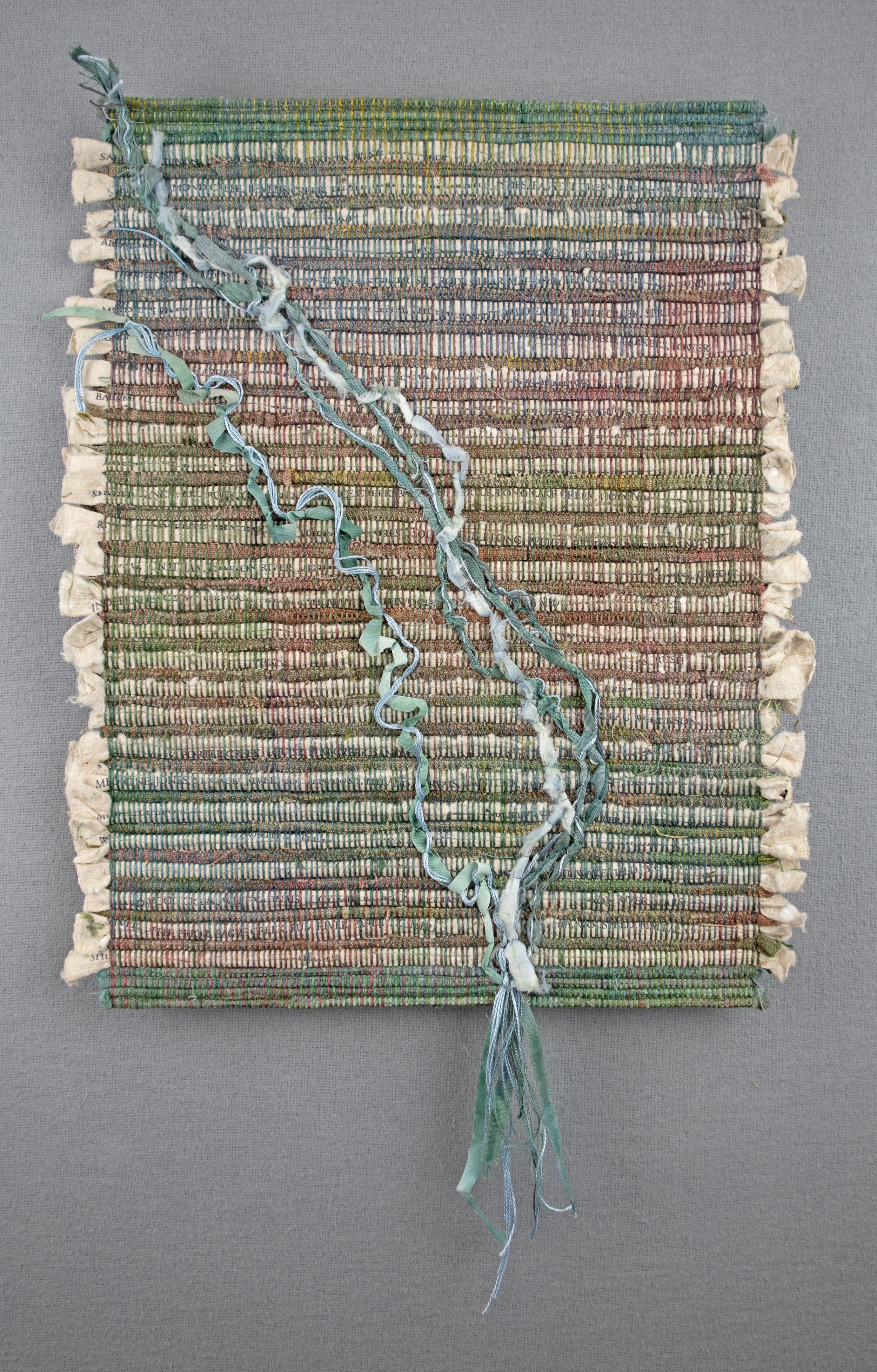Winter is a time for deep reflection and reckoning. This season has been a difficult one with a lot to sort through. Since the coming north, I realize that I’m still in the process of moving. Sorting, packing, and letting go, mentally this time. The distance has allowed for new insight into events of the past and in decisions about how things should be now, moving forward.
Work in progress - handwoven fabric, vintage linens and endless amounts of scraps.
I’ve had moments sitting in the dark not understanding which way to go. It is frustrating on many levels, but I must remember that it is often like this in the middle. Gradually, we can have a glimpse of the direction things are going. Becoming is a slow process and I can feel the pace of life starting to quake. In the studio I have been following an instinct to find ways to dealing with scraps, found vintage textiles and past pieces that never worked. I have been experimenting with them and have some works in progress. On my loom I’m still working with rag rug structure as a launching point for new work. I’ve been thinking a lot about the saying “sweep it under the rug.” As I work to uncover my family story, I’ve been pulling up the rugs and look for what was hidden.
Rag rug coming off the loom. The color mixing on this one surprised me. I want to make more.
This exploration on the loom seems to have legs. I keep having questions to answer, ideas to try out. I love the color potential of rugs with painted warps and my own hand dyed fabric. There are so many ways to bring color and texture to life. And there are so many surprises.
scraps get cut and joined together for rag rug weaving.
This year one of my overarching goals is to search out new communities to join. I’ve begun to wonder if I’ll seek out a studio space outside of my home to work in and to be closer to other artists. I’m looking for opportunities to join my passion for the outdoors, art and education.
One of the biggest surprises from the move is how much I have changed. This place, this Minnesota has worked some magic on me. I feel myself becoming more myself here. My attunement of place has heightened and I’m finding myself more curious. There is an audible psychic sigh of relief in our part of Minnesota. On Wednesday the snow began to fly in the afternoon and continued into the evening quite heavily. We woke up the next day to about six inches of snow. This is our first significant snow of the season. We had a seasonal total of four inches of snow until the other day (with over ninety inches last winter). The anxiety of Minnesotans was palpable. Though we may complain about the snow, it is part of what it means to be part of this place.
The sun after the snow. The light and shadows are so beautiful.
















